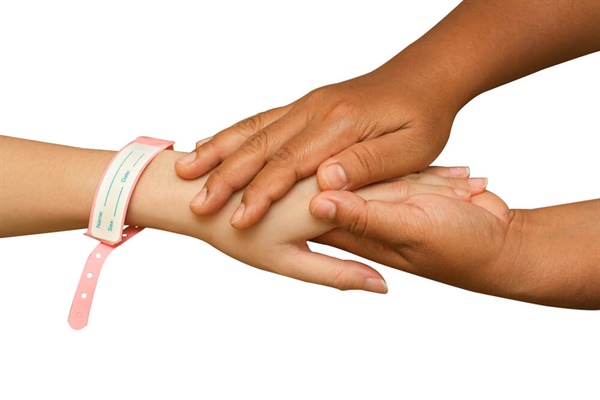Health care safety is an important issue in Canada. In October 2016, Measuring Patient Harm in Canadian Hospitals – a report from the Canadian Institute for Health Information (CIHI) and the Canadian Patient Safety Institute (CPSI) – showed that in 2014-2015 harm was experienced by patients in one of every 18 hospital stays. Of those 138,000 hospitalizations, 30,000 involved more than one form of harm.
In February 2017, the Saskatchewan Health Quality Council (HQC) launched a social media campaign to spread the word about the provincial Safety Alert/Stop the Line Initiative and to foster a dialogue about safety in health care. Patients and family members, as well as health care providers, leaders, and decision-makers, publicly shared their thoughts on safety through a series of short quotes posted on Twitter and Facebook.
Here, two of the campaign participants elaborate in more detail on what safety means to them, and why it’s so important in health care.
Donna Davis
Patient advocate, Carievale, Sask.
Donna Davis knows the importance of patient safety firsthand. She has worked as a licensed practical nurse in Saskatchewan for four decades, as well as a quality improvement and patient safety manager. Currently, she is the Community Health Services Manager at Gainsborough & Area Health Centre.
But it was a family tragedy that really ignited Donna’s passion for patient safety. In March 2002, her 19-year-old son, Vance, was taken to hospital following a car accident. Sadly, Donna lost her son due to an adverse event. Since then, she has championed patient safety provincially, nationally, and internationally, and has worked with CPSI and other organizations.
Here, Donna shares her thoughts on patient safety.
Patient safety is important to me . . . because no patient should be harmed by care intended to help them.
I make health care safer . . . for other patients and families by seeking opportunities to partner with health care providers and organizations to provide the perspective of the patient/family and encourage others to speak up.
We can all improve patient safety by . . . being involved in our own or our loved one’s health care journey by asking questions and talking to those in the position of care. Ask, listen, talk.
(Donna is also featured in a CPSI video and article, entitled Vance’s passion for helping others lives on, that is available here.)

Justin Kosar
Pharmacist, Saskatoon
Health care safety is important to Justin Kosar. As the Antimicrobial Stewardship Pharmacist working at Royal University Hospital in Saskatoon Health Region, he knows that the wrong medication or the inappropriate use of medication can harm, rather than help, patients. Antibiotics, for example, should be handled with care in an effort to stop the global spread of antibiotic resistance.
Although antimicrobials are some of the most commonly prescribed medications in hospital settings, statistics show that up to 50 per cent of antimicrobial use in inappropriate. This is associated with the development of antimicrobial resistance, increased rates of Clostridium difficile infection, prolonged hospital stays, and patient mortality.
Here, Justin shares his thoughts on health care safety.
Safety is important to me because . . . that should be the primary goal of all health care that is provided. Everything that we do should be within the scope of providing safe care to our patients. Safety also represents the one holistic ideal that should fundamentally unite everyone in health care from front-line workers to administration to auxiliary and support staff, as it has such a wide impact across all aspects that health care touches on.
I make health care safer by . . . ensuring patients are having their infections treated by the best possible therapy for that person and that condition. That means I ensure we are dosing at the right dose in the right way for the right amount of time and that I’m monitoring for any possible or actual side effects of that medication therapy. I make health care safer by also listening to both the patients’ and care providers’ perspectives to come up with the best medication therapy for their condition.
We can all improve safety by . . . always asking the question, ‘Is there a safer way to do things?’ Also, I think it’s important to realize that everyone plays a role in the culture of safety and that everyone’s opinion and expertise matters.



